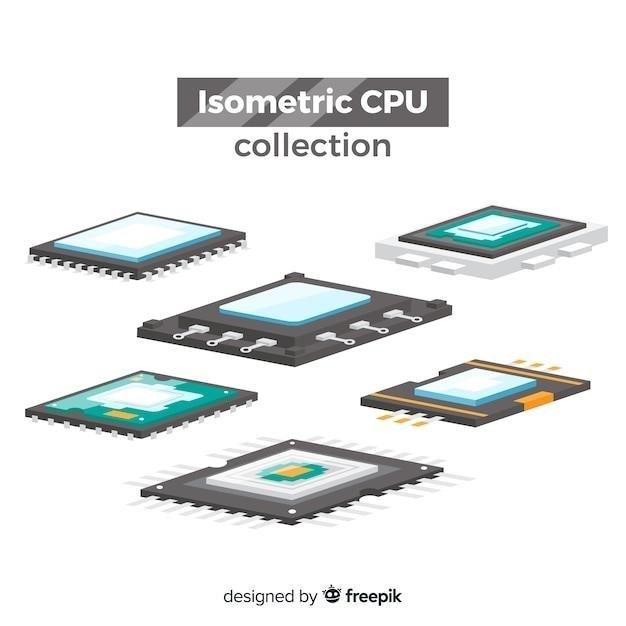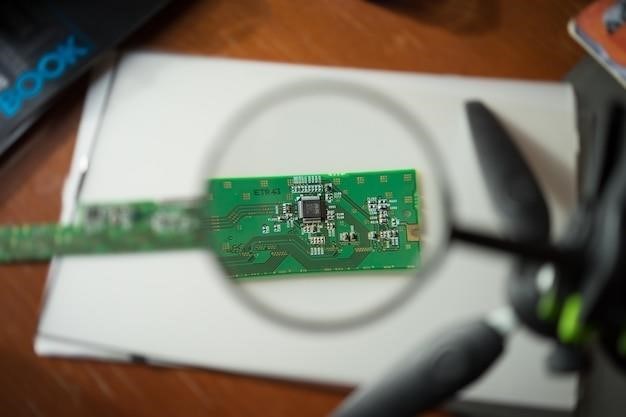ESP32 HyperHDR SPI Tutorial
This tutorial will guide you through connecting an ESP32 to a HyperHDR system using the SPI protocol for controlling LED strips. HyperHDR is a powerful ambient lighting system that analyzes video and audio streams to create dynamic lighting effects‚ and SPI offers a high-speed communication channel for controlling the LEDs with greater precision. The tutorial will cover hardware setup‚ software configuration‚ wiring diagrams‚ code examples‚ and troubleshooting tips.
Introduction
HyperHDR is a cutting-edge ambient lighting technology that transforms your viewing experience by synchronizing LED lights with the colors and brightness of your screen. This innovative system creates an immersive atmosphere‚ enhancing your enjoyment of movies‚ games‚ and other visual content. While HyperHDR traditionally relies on USB communication for controlling LED strips‚ the SPI protocol offers a compelling alternative‚ enabling faster and more efficient data transfer.
This tutorial explores the benefits of using ESP32 with HyperHDR via the SPI interface. The ESP32 is a powerful microcontroller known for its versatility and affordability‚ making it an ideal choice for controlling LED strips. Its built-in SPI capabilities allow for high-speed communication with the LED controller‚ ensuring smooth and responsive lighting effects. By leveraging the ESP32 and SPI‚ you can experience a significant performance boost compared to traditional USB-based solutions.
This tutorial will guide you through the process of setting up an ESP32-based HyperHDR system using SPI communication. We will cover essential hardware and software components‚ wiring diagrams‚ code examples‚ and troubleshooting tips. Let’s embark on this journey to unlock the full potential of HyperHDR with the power of ESP32 and SPI.
HyperHDR and SPI
HyperHDR is a software application that utilizes your computer’s video and audio signals to create dynamic lighting effects that enhance your viewing experience. The software analyzes the content on your screen and adjusts the color and brightness of connected LED strips in real-time‚ creating an immersive and responsive atmosphere. HyperHDR supports various LED strip types‚ including WS281x‚ APA102‚ HD107‚ SK9822‚ and SK6812 RGBW‚ offering flexibility in choosing the right lighting solution for your setup.
The SPI (Serial Peripheral Interface) protocol is a synchronous serial communication method commonly employed in embedded systems. Its high-speed data transfer capabilities and ease of implementation make it a popular choice for connecting microcontrollers like the ESP32 with peripheral devices‚ including LED controllers. HyperHDR‚ through its “HyperSPI” feature‚ leverages the SPI protocol to control LED strips connected to an ESP32‚ allowing for fast and efficient data transfer. This results in smoother and more responsive lighting effects‚ enhancing the overall HyperHDR experience.
In contrast to traditional USB-based communication‚ SPI offers a faster and more direct connection between the ESP32 and the LED controller; This eliminates the need for complex data conversion and reduces latency‚ leading to improved performance and a more seamless integration with HyperHDR. Using SPI with HyperHDR provides a more efficient and powerful way to create dynamic lighting effects‚ making your viewing experience more engaging and immersive.
ESP32 Setup
The ESP32 is a powerful and versatile microcontroller that is perfect for use with HyperHDR. It offers a wide range of features‚ including built-in Wi-Fi and Bluetooth connectivity‚ multiple analog and digital input/output pins‚ and a dedicated SPI interface‚ making it an ideal choice for controlling LED strips. The ESP32’s capabilities allow you to create a robust and reliable HyperHDR setup that seamlessly integrates with your existing environment.
To get started‚ you will need an ESP32 development board. There are many different ESP32 boards available‚ each with its own set of features and capabilities. Some popular choices include the ESP32-WROOM-32‚ ESP32-CAM‚ and ESP32-S2. The specific board you choose will depend on your needs and the complexity of your project.
Once you have your ESP32 board‚ you will need to set up the development environment. This involves installing the Arduino IDE‚ configuring the board manager to include the ESP32 platform‚ and downloading the necessary libraries. You can find detailed instructions and tutorials on the ESP32 documentation website. The Arduino IDE provides a user-friendly interface for writing code‚ uploading it to the ESP32‚ and debugging your project.
Hardware Requirements
To build your ESP32-based HyperHDR setup‚ you’ll need a few key components⁚
- ESP32 Development Board⁚ This serves as the brains of your system. Choose a board that suits your project’s needs. Popular options include the ESP32-WROOM-32‚ ESP32-CAM‚ and ESP32-S2.
- LED Strip⁚ This is the visual output of your HyperHDR setup. Select a strip compatible with SPI communication‚ such as WS2812B‚ APA102‚ or SK6812. The length and density of the strip will depend on your desired setup.
- Level Shifter (Optional)⁚ If your LED strip operates at a different voltage than the ESP32‚ a level shifter is necessary to ensure compatibility. This is often the case with 5V LED strips and 3.3V ESP32 boards.
- USB Cable⁚ This is used to connect your ESP32 board to your computer for uploading code and debugging.
- Breadboard (Optional)⁚ A breadboard provides a convenient way to prototype and test your circuit without soldering.
- Jumper Wires⁚ These are used to connect the various components of your circuit.
Having these components readily available will allow you to proceed with the wiring and software setup steps efficiently.

Software Setup
Setting up the software environment is crucial for programming your ESP32 to work with HyperHDR. Here’s a step-by-step guide⁚
- Install Arduino IDE⁚ Download and install the Arduino IDE from the official website (https://www.arduino.cc/). This IDE provides a user-friendly interface for writing and uploading code to your ESP32.
- Install ESP32 Board Support⁚ Within the Arduino IDE‚ go to “File” -> “Preferences” and add the following URL to the “Additional Boards Manager URLs” field⁚ “https://dl.espressif.com/dl/package_esp32_index.json”.
- Add ESP32 Board⁚ Open the “Tools” menu in the Arduino IDE and select “Boards Manager”. Search for “ESP32” and install the latest version of the ESP32 board support package.
- Install HyperSPI Library⁚ The HyperSPI library is essential for communicating with HyperHDR. You can install it through the Arduino IDE’s Library Manager. Search for “HyperSPI” and install the latest version.
- Configure Serial Port⁚ In the Arduino IDE‚ go to “Tools” -> “Port” and select the COM port that corresponds to your ESP32 board. This allows communication between your computer and the ESP32.
With these steps completed‚ you have a robust software environment ready for developing your HyperHDR-compatible ESP32 code.
Connecting the ESP32
Connecting the ESP32 to your HyperHDR setup involves establishing a reliable communication channel between the ESP32 and your Raspberry Pi. This connection typically uses the SPI protocol for high-speed data transfer. Here’s a breakdown of the process⁚
- Choose Your ESP32 Board⁚ Select an ESP32 board that suits your project requirements. Popular choices include the ESP32 DevKitC‚ ESP32-WROOM-32‚ or ESP32-S2 mini.
- Level Shifter (Optional)⁚ If your LED strip operates at a higher voltage than the ESP32’s output‚ you’ll need a level shifter to ensure compatibility. A common level shifter is the SN74AHCT125N.
- Connect LED Strip⁚ Connect your LED strip to the output pins of the ESP32 or level shifter. Ensure you follow the correct wiring configuration for your LED strip’s type.
- Connect ESP32 to Raspberry Pi⁚ Use SPI communication to link the ESP32 and Raspberry Pi. The exact wiring diagram depends on your specific ESP32 board and Raspberry Pi model. Refer to the ESP32’s pinout diagram and Raspberry Pi documentation for guidance.
Once the connections are established‚ you can proceed to configure the HyperHDR software on your Raspberry Pi to communicate with the ESP32 and control your LED strip.
Wiring Diagram
The wiring diagram for connecting the ESP32 to your HyperHDR system is crucial for establishing a proper communication link. Here’s a typical wiring configuration for an ESP32 board (like the ESP32 DevKitC) connected to a Raspberry Pi (like a Raspberry Pi 3 Model B) and an LED strip⁚
ESP32 Board (ESP32 DevKitC)
- MOSI (Master Out Slave In)⁚ Connect to GPIO13 on the ESP32.
- MISO (Master In Slave Out)⁚ Connect to GPIO12 on the ESP32.
- SCK (Serial Clock)⁚ Connect to GPIO14 on the ESP32.
- CS/SS (Chip Select/Slave Select)⁚ Connect to GPIO15 on the ESP32.
- LED Strip Data In⁚ Connect to the data input pin of your LED strip‚ typically labeled “DIN” or “SI.” You may need a level shifter if your LED strip operates at a higher voltage.
Raspberry Pi (Raspberry Pi 3 Model B)
- MOSI (Master Out Slave In)⁚ Connect to GPIO10 on the Raspberry Pi.
- MISO (Master In Slave Out)⁚ Connect to GPIO9 on the Raspberry Pi.
- SCK (Serial Clock)⁚ Connect to GPIO11 on the Raspberry Pi.
- CS/SS (Chip Select/Slave Select)⁚ Connect to GPIO8 on the Raspberry Pi.
Remember to double-check the pin configurations for your specific ESP32 board and Raspberry Pi model.
Code Example
The following code example demonstrates a basic HyperSPI implementation using an ESP32. This code sets up the SPI communication and handles data reception from the Raspberry Pi to control the LED strip. You’ll need to modify the pin definitions and LED strip type to match your setup.
cpp
#include
// Define the ESP32 pins for SPI communication
const int MOSI = 13;
const int MISO = 12;
const int SCK = 14;
const int SS = 15;
// Define the data input pin for the LED strip
const int LED_DATA = 16;
// Set up the SPI communication
void setup {
Serial.begin(115200);
SPI.begin(SCK‚ MISO‚ MOSI‚ SS);
pinMode(LED_DATA‚ OUTPUT);
}
// Handle the SPI data reception and send it to the LED strip
void loop {
// Check if data is available on the SPI bus
if (SPI.available) {
// Read the data byte from the SPI bus
byte data = SPI.read;
// Send the data byte to the LED strip
digitalWrite(LED_DATA‚ data);
}
}
This code demonstrates a basic SPI implementation. You’ll likely need to adapt it to your specific HyperHDR setup and LED strip type. You can find more detailed code examples and libraries specific to HyperHDR on the HyperHDR GitHub repository or on online forums dedicated to HyperHDR projects.

HyperHDR Configuration
Once you’ve successfully wired your ESP32 to the Raspberry Pi and LED strip‚ you need to configure HyperHDR to utilize the SPI bridge. This involves setting up the correct communication parameters and selecting the appropriate driver. In HyperHDR‚ navigate to the “Settings” menu and locate the “LED Driver” section. Here‚ you’ll find a list of available drivers‚ including HyperSPI. Select the HyperSPI driver‚ which will enable the SPI communication protocol for your setup. Within the HyperSPI settings‚ you’ll need to specify the communication speed‚ the ESP32’s IP address‚ and other relevant parameters. Ensure that the settings match the configuration of your ESP32 code‚ specifically the SPI communication speed and any other relevant configurations.
After configuring the HyperSPI driver‚ you may need to perform additional adjustments within HyperHDR’s “LED Settings.” These settings allow you to customize the LED strip behavior‚ including brightness‚ color calibration‚ and other visual preferences. Test the LED strip functionality after configuration to ensure proper operation and fine-tune settings as needed.
Remember‚ HyperHDR offers a range of settings and options for customizing the ambient lighting experience. Experiment with different settings to find the optimal configuration for your setup.



